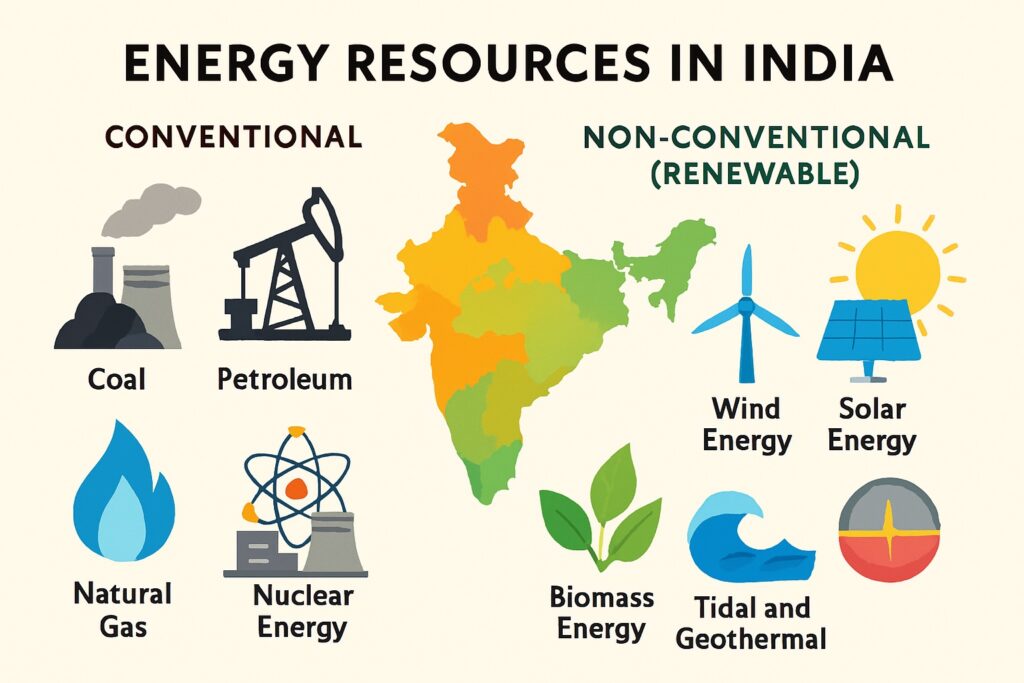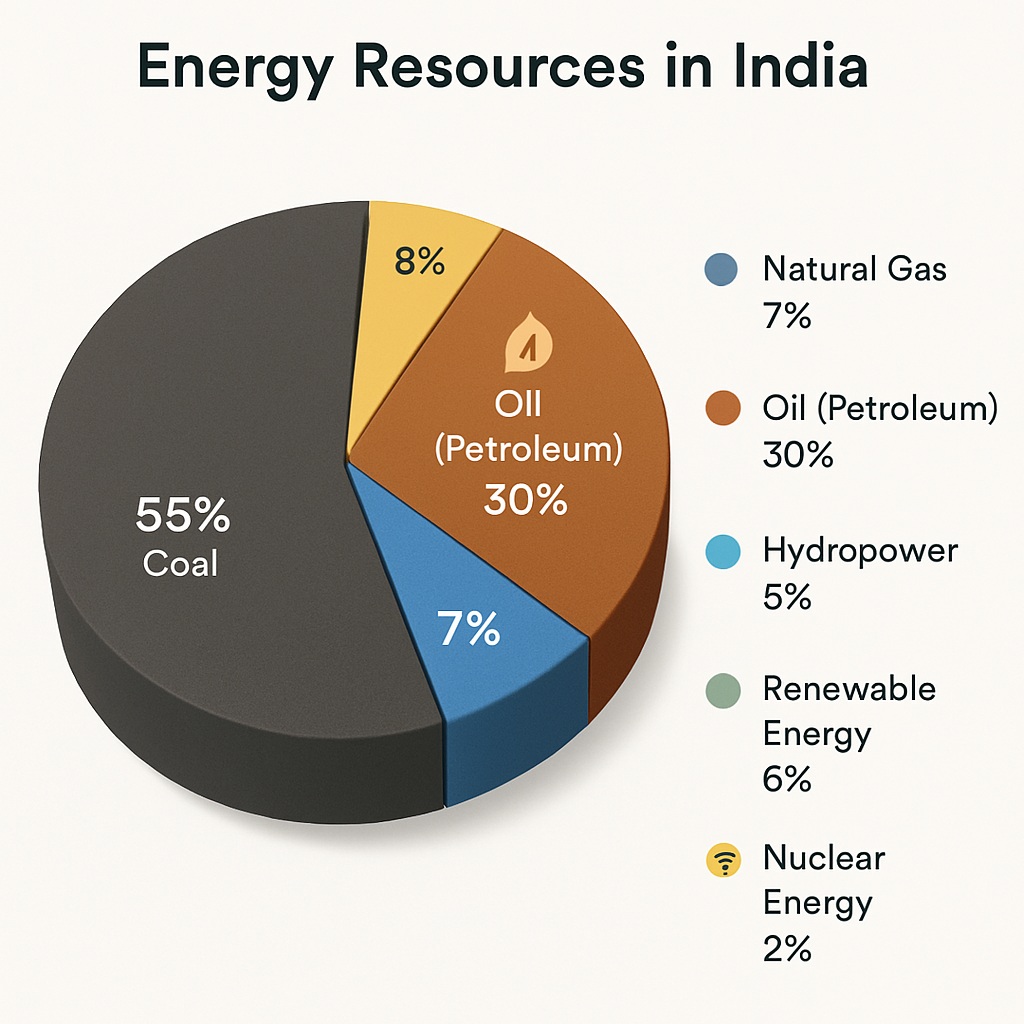India, as a rapidly developing country, requires a vast amount of energy to fuel its economy, industries, transportation systems, and residential needs. Energy resources in India can be broadly categorized into conventional and non-conventional sources. With a growing population and increasing urbanization, the demand for energy continues to rise, making the efficient management and development of energy resources crucial for sustainable growth.

Table of Contents
1. Conventional Energy Resources
These are traditional sources of energy and have been used for a long time.
a) Coal
-
India is the 5th largest reserve holder of coal in the world.
-
It is primarily used for electricity generation and in steel and cement industries.
-
Major coal-producing states: Jharkhand, Odisha, Chhattisgarh, West Bengal, and Madhya Pradesh.
-
Challenges: Environmental pollution, land degradation, and greenhouse gas emissions.
b) Petroleum
-
Used in transport, power generation, and as a raw material in petrochemical industries.
-
India imports a large portion of its crude oil.
-
Major oil fields: Bombay High (offshore), Ankleshwar (Gujarat), and Digboi (Assam).
c) Natural Gas
-
Cleaner than coal and petroleum.
-
Used in fertilizers, electricity generation, and domestic use.
-
Krishna-Godavari Basin and the Bombay High are key producing regions.
d) Electricity (Thermal and Hydro)
-
Thermal power (mostly coal-based) dominates.
-
Hydropower is generated by damming rivers – eco-friendly but has social and ecological consequences.
-
Major hydroelectric projects: Bhakra Nangal, Hirakud, Tehri.
e) Nuclear Energy
-
India has several nuclear power plants (e.g., Tarapur, Rawatbhata, Kudankulam).
-
Uranium is sourced from Jharkhand and Meghalaya.

2. Non-Conventional (Renewable) Energy Resources
These are eco-friendly and sustainable.
a) Solar Energy
-
India receives abundant sunlight throughout the year.
-
The National Solar Mission aims to achieve 100 GW solar capacity.
-
States like Rajasthan, Gujarat, and Madhya Pradesh have major solar farms.
b) Wind Energy
-
Tamil Nadu, Gujarat, Maharashtra, and Karnataka are leading wind power producers.
-
India ranks among the top wind energy producers globally.
c) Biomass and Biogas
-
Energy derived from organic materials like crop residue, dung, and municipal waste.
-
Biogas is particularly used in rural areas for cooking and lighting.
d) Tidal and Wave Energy
-
Still at a nascent stage in India.
-
The coastal regions offer potential for future development.
e) Geothermal Energy
-
Areas like Manikaran (Himachal Pradesh) and Puga Valley (Ladakh) have geothermal potential.
3. Government Initiatives
-
Ministry of New and Renewable Energy (MNRE): Promotes renewable energy development.
-
UJALA scheme: Promotes the use of LED lights for energy efficiency.
-
International Solar Alliance (ISA): Headquartered in India, promotes solar energy globally.
4. Challenges in Energy Sector
-
Overdependence on fossil fuels.
-
High import bills for oil and gas.
-
Environmental degradation.
-
Need for better infrastructure for renewable integration.
-
Balancing energy access with sustainability.
5. The Way Forward
-
Shift towards clean and renewable energy.
-
Promote energy conservation and efficient usage.
-
Invest in grid infrastructure for integrating renewables.
-
Enhance research and innovation in clean energy technologies.
Conclusion
India’s energy future lies in a balanced approach that combines the responsible use of conventional resources with aggressive promotion of renewable sources. Sustainable energy development will not only help in meeting growing demands but also ensure environmental protection and energy security for future generations.
Read: Geography Notes